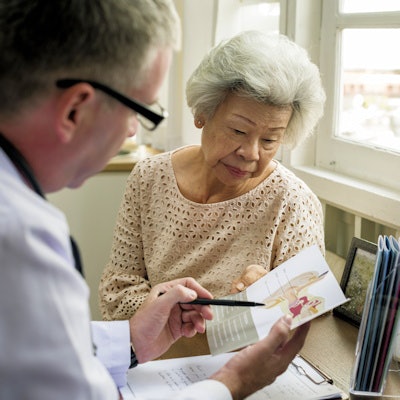
Hispanic and Asian patients have been significantly less likely to get imaging studies during the COVID-19 pandemic, creating the risk of delayed diagnoses, according to a Brigham and Women's study published January 12 in the Journal of the American College of Radiology.
At the Brigham and Women's academic medical center in Boston and eight affiliated outpatient facilities, the volume of imaging studies fell precipitously from prepandemic days -- January to March -- to when nonurgent healthcare services resumed in June and July. The number of studies conducted per day fell from 869 to 502, reported Dr. Ronilda Lacson, PhD, associate professor of radiology at Harvard, and colleagues.
What's more, Asian and Hispanic patients were significantly less likely to undergo imaging studies compared with White and non-Hispanic patients, making worse already significant disparities in access to healthcare.
"Inequities worsened, with patients from communities with high rates of poverty, unemployment, and chronic disease having significantly lower odds of undergoing radiology examinations post-COVID-19-shutdown," the authors wrote.
The study was conducted in recognition of the negative impact the COVID-19 pandemic has had on radiology utilization and longstanding concern about inequities in access to care for vulnerable parts of the Boston-area population. Researchers retrospectively examined electronic health records of medical visits and looked at trends according to ZIP codes where there are high rates of poverty, unemployment, and chronic diseases.
"The age and sex distribution of priority populations is similar to that of Boston overall, but they are more racially and ethnically diverse," Lacson et al noted.
Researchers compared imaging volume during a prepandemic period, between January 1 and March 8, to the period after nonurgent services resumed, between June 7 and July 15. Prior to the shutdown, the facilities had been conducting more than 600,000 imaging studies per year.
The study included 78,674 patients, with a mean age of 56. Following the shutdown of nonurgent care, services were reopened, yet volume in all care settings failed to return to prepandemic levels, according to the study, which was supported by a grant from the Agency for Healthcare Research and Quality.
A total of 59,080 studies were completed in 68 days before the shutdown, compared with 19,594 in 39 days after services resumed. The mean volume per day after the shutdown was 58% of the prepandemic level, researchers reported. Furthermore, the volume of outpatient services after the shutdown was 59% of the baseline figure, a statistically significant finding. The declines are similar to what has been reported in other studies, the authors pointed out.
The odds ratios for Asian and Hispanic patients in accessing imaging studies after the shutdown were 0.90 and 0.82, respectively, both statistically significant results. Prior research had shown that Hispanics are more likely to have a delay in access to diagnostic imaging, but conversely that Asians are more likely to get radiology care.
"Patients of Asian ethnicity have been reported to have higher levels of subjective fear of COVID-19, which may in part account for our finding," Lacson and colleagues wrote. "These findings are also consistent with other studies which demonstrate the negative effects on health behaviors of the Asian community as a result of xenophobia and discrimination."
Researchers also reported that in outpatient settings, those who were married or separated were less likely to get imaging studies than single people, which possibly reflects challenges in getting healthcare services due to childcare obligations. Less access to imaging could also reflect unemployment or lower income, they suggested. Another key finding was that dual-energy x-ray absorptiometry examinations, mammography, MRI, and ultrasound were more commonly performed than x-ray examinations.
Lacson et al called for more research on the clinical impact of the changes in the use of imaging services due to the pandemic and for greater outreach to vulnerable communities to address underutilization of diagnostic imaging. Radiology groups should also prepare for shifts in utilization, they advised.
"The COVID-19 pandemic has exacerbated known preexisting inequities in diagnostic radiology utilization," they wrote. "Resources should be allocated to address subgroups of patients who may be less likely to receive necessary diagnostic radiology examinations, potentially leading to compromised patient safety and quality of care."



















